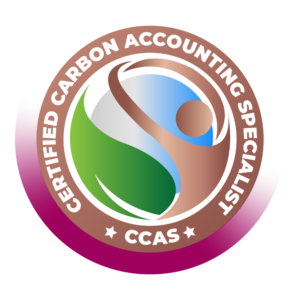 Certified Decarbonization Professional—CDP Exam Question Bank
Certified Decarbonization Professional—CDP Exam Question Bank
The Certified Decarbonization Professional (CDP) Exam Question Bank consists of multiple-choice questions. Five simulation exams, each lasting two and one-half hours (2.5), will allow the students to assess their knowledge and ability to finish the exam with the required score by practicing 500 questions.
The simulation exams work with the latest version of the Certified Decarbonization Professional (CDP) knowledge domain.
The ASHRAE Certified Decarbonization Professional (CDP) program aims to equip professionals with knowledge and skills to contribute to building decarbonization goals, focusing on principles and techniques for reducing greenhouse gas emissions.
Obtaining the CDP certification will demonstrate your ability to build decarbonization and provide access to career prospects in this rapidly expanding field. As a green activist, it can equip you with the knowledge and tools to effectively advocate for and advance building decarbonization initiatives.
Krishnaji Pawar, the CEO and founder of Beyond Smart Cities, prepared the 500+ practice questions using NEW CDP-Key Terminology Flash Cards (121+ key terminology flash cards!).
Krishnaji Pawar specializes in developing sustainable design strategies for Green Building Certification Systems (LEED, GSAS, ACP, ISO 14001:2015, etc.), energy management, energy efficiency, energy audits, building commissioning, environmental impact assessment, and environmental management systems.
This certification is suitable for professionals in the built environment, including architects, engineers, contractors, facility managers, policymakers, and sustainability consultants. It’s also suitable for young energy professionals who want to help organizations reduce GHG, benefiting from cost avoidance, risk reduction, competitiveness, productivity, shareholder value, community outreach, and branding.
Learning Objectives
- Five practice examinations with over 500 questions range from basic to difficult to specialist.
- Learn each question and answer’s reasoning and associated knowledge to review.
- Assess, analyze, and create sustainable methods to reduce new and existing buildings’ life-cycle carbon footprint.
- Report carbon emissions, and learn decarbonization management.
- Recognize strategies and make smart choices.
- Experience the CDP exam.
- Consider the practice test part of your education.
- New CDP: 138+ Key Terminology Flash Cards!
- CDP_Engineering and HVAC Design Equations
ASHRAE Certified Decarbonization Professional (CDP) Credential Benefits
- Provides greater recognition.
- Increases credibility.
- Improves career opportunities.
- Increases earning power.
- The CDP digital badge shares candidate metadata for enhanced visibility.
- Positions the candidate for continued recognition and success.
A decarbonization professional is a key player in the development of sustainable strategies to reduce the carbon footprint of buildings. The Certified Decarbonization Professional (CDP) certification program, recognized by the American Society of Heating, Refrigerating and Air-Conditioning Engineers (ASHRAE), validates their ability to assess, analyze, and develop effective strategies, promoting a sustainable world and advancing the arts and sciences of heating, ventilation, air conditioning, and refrigeration.
Other Related Courses
Certified Decarbonization Professional (CDP) Overview
The Certified Decarbonisation Professional Overview course covers decarbonization drivers, building carbon emissions sources, Kyoto Protocol implications, auditing certification, and exam sample questions for the Certified Decarbonisation Professional course.
 Global Carbon Markets—Emissions Trading
Global Carbon Markets—Emissions Trading
The Global Carbon Markets—Emissions Trading course will teach you the economic theory and practical implementation of greenhouse gas cap-and-trade systems and why they ameliorate climate change.
Fundamentals of Organizational GHG Accounting
The Fundamentals of Organizational GHG Accounting training covers GHG accounting for organizations. The training materials follow the GHG Protocol Corporate Standard and ISO 14064: Part 1 GHG inventory standard.
Urban Greenhouse Gas Inventory Specialist – Exam Prep
This preparation step shows how to find the sources of greenhouse gases in a city, collect data, measure emissions, and get ready for the Urban Greenhouse Gas Inventory Specialist exam.
GHG emissions inventories are important because they help a city figure out the best ways to cut emissions and serve as a starting point for measuring progress over time.



